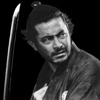As for me, I never meant NCO swords weren’t authentic. What I mean is the iconic imagery associated with Japanese swords:samurai, seppuku, jidai geki... they make the Japanese sword look like an almost supernatural object.
Therefore, a guy who knows nothing about sword will buy an authentic NCO sword thinking he’s just bought a handmade samurai sword when he’s actually just bought a machine made sword that was never held by an actual samurai.
That’s what I mean by gullible. Thinking he’s buying an ancient sword, he’s ready to pay a hefty sum for what is only a militarisa collectible (note I have nothing against those swords as frequenting this board has opened my eyes to the wealth of interest these swords represent), and since this attitude is repeated all across eBay, it drives the prices up.





